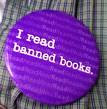
Alanna is determined to become a knight. Even if she would be the first maiden knight in more than a hundred years. Her twin brother instead wants to become the best sorcerer in the world, and doesn’t have any interest in fights and armours. That’s why when the times come for them to be sent away from home, Thom to court and Alanna to the convent, they decide to switch places. Both red-headed and with deep purple eyes, they are easily mistaken for one another, the only difference being their hair length. Alanna only needs to cut hers to look exactly like a boy. And that is how she becomes Alan of Trebond.
Becoming a knight is not easy though. The training is hard for everyone, and Alanna has to work twice as hard to prove to herself that she’s just as good as any other boy, if not better. But her challenges are not just physical ones. She will have to learn to accept her Gift, a magic that can both heal and destroy, and make good use of it. And she will have to rely on her instincts to discern good and evil, enemies and friends.
After reading Tales of Earthsea (which I'll review soon, I'm still writing it!) , Tamora Pierce’s style felt simple and unsophisticated. I love Ursula Le Guin and I could read anything she writes, just to take pleasure in her use of words, in the atmospheres she creates, in the musicality of the prose.
With Alanna, the language is free of any ornament, and is used straightforwardly to tell the story. That’s why, even though the Earthsea books are aimed at young adults as well, Alanna is definitely written for a younger audience, or maybe for those who prefer easier and quicker reads.
This said, I must admit I enjoyed it and I will definitely read the rest of the books in the series, because I want to know what happens to our heroine and what she will make of her life.
Alanna is set in a typical sword and sorcery world. The medieval society of Tortall is strictly hierarchical, with a king ruling over it, and with an aristocracy formed by knights, dukes and earls, who earned their nobility solely by birth. Typically, it’s men that rule, while women can only hope to become ladies and find a good husband.
While the hierarchy is never challenged (and the revolutionary side of me rebelled against it) the rules that command that a boy must fight and a woman must be weak are defied by Alanna and her twin brother, who simply cannot think of conforming to what is decided by their gender.
I was a bit suspicious, though, of Alanna’s way of disregarding her femininity. It just seemed to confirm the idea that women are the weak, gentle and silly sex. Too often Alanna is caught thinking how she hates being a girl, or how she doesn’t want to be thought as one. As if being physically powerless was the only kind of weakness that matters. As if being strong was the only way of asserting herself in the world.
And yet, even if I can’t help thinking this way, I am always fascinated by women who can fight and can defend themselves. I personally am against the use of violence as a means to solve conflicts, and would rather argue to death instead of starting a fight. I appreciate when in books as in films, problems find a way to be solved without killing or beating anyone.
And yet…I just love when women can kick some ass! It gives me a strange sense of satisfaction and freedom. I know this is very contradictory, but some of my favourite characters are fighting women: Buffy, Eowyn, Trinity…My favourite tv series as a child were Wonder Woman and the Bionic Woman.
I can’t explain why. I am totally against women in military because I’d rather not have armies at all! But when it comes to fantashttp://www.blogger.com/img/gl.link.gify and other worlds, I find it very liberating to have a female hero who could save my life.
So yes, I like Alanna as well. I also must say that, even though she hates being a girl, people keep telling her to accept herself, letting the reader understand that this will be an important issue for her in the future. Also, in the preview of the second book Alanna’s thoughts explain exactly what I’ve been thinking all the time:
Her fellow squires at the palace would laugh if they knew she feared spiders. They’d say she was behaving like a girl, not knowing she “was” a girl. “What do they know about girl anyway?...”Maids at the palace handle snakes and kill spiders without acting silly. Why do boys say someone acts like a girl as if it were an insult?
I’m looking forward to reading her next adventure now. Judging by the preview, it sounds promising.
Other blog reviews
Someone's read it already
foxy writer






















